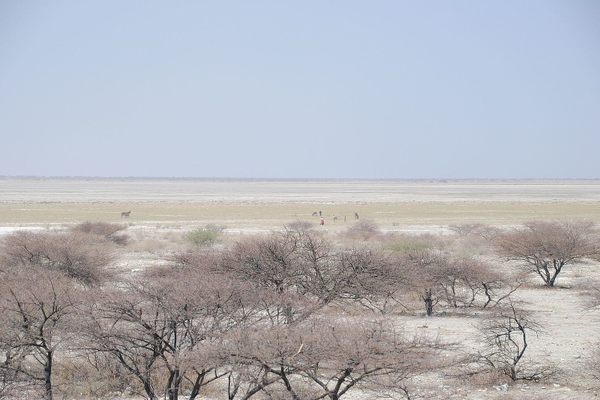Far off the beaten path, accessible only 4x4 in fact, are Botswana’s Gcwihaba Caverns, a fantastical series of caverns filled with stalactites, stalagmites, and bats. Thousands of bats.
Once a potential explorer reaches the isolated Gcwihaba Caverns, it is not a challenging descent in terms of spelunking, but it has unique challenges of its own. Even the Botswana tourism website warns to prepare for a storm of flying mammals if you make too much noise.
The main chamber of the dolomite caves, named Drotsky’s Cavern after the first European farmer to be shown the cave in 1934, is a massive clearing in the stone in which bats hang from all the walls. The cave systems are home to at least three distinct species of bat, all of which are harmless, but all of which inhabit the caves in force. The floor of the cave is covered by a deep layer of sand. Upon closer inspection, it is a layer of thousand years of bat poo, the fertile habitat of cave crickets, cockroaches, and other lovely crawlers, which are in turn eaten by the bats.
Archeological artifacts have also been found in and around the caves, suggesting that they were once used as shelter for prehistoric man. In fact, up to the 1930s the Ju|’hoan tribe of hunter-gatherers were still using the cave as seasonal shelter. When the Botswana government forbade the San to hunt and assigned villages to settle in, the caves were abandoned by humans.
Know Before You Go
The caves are very remote and can be accessed in 2-3 hours from the Dobe border via a gravel road to the Ju|’hoan San village KaiKai and then a sand and mud track to the caves. Alternatively, a sand road can be taken from the A35 around Tsao for 3-4 hours which also becomes a sand and mud track. Be prepared for deep loose sand or deep mud, depending on the season. Especially the sand and mud tracks are rarely driven, sometimes less than a couple of cars per week.
The cave guide and a San community member live at five minutes northeast of the caves. The cave guide is government paid, the San representative is paid a small access fee. It is possible to camp at their site. Bringing fresh fruit, vegetables, meat and beer will be highly appreciated. There are multiple caves. The main cave can easily be accessed via staircases, but is deep and very complex.
It is strongly recommended to use the cave guide services. He is a great teller of geological and archeological artifacts, as well as local stories as he grew up as Herero with the Ju|’hoan San.
WARNING: Deep inside the cave there is oxygen deprivation. Also the cave is smelly from bat poo and possible poisonous H2S sulfur gas.
Community Contributors
Added by
Edited by
Plan Your Trip
The Atlas Obscura Podcast is Back!





























Follow us on Twitter to get the latest on the world's hidden wonders.
Like us on Facebook to get the latest on the world's hidden wonders.
Follow us on Twitter Like us on Facebook